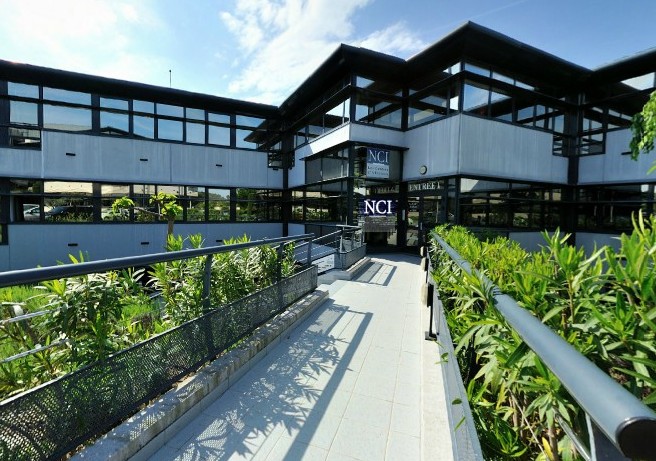Outlook for the Electronics Industry in 2023
Just ahead of 2022, I peered into my crystal ball, and made some predictions in Embedded Computing Design for the year for the global electronics industry. Reading those in 2023, I can say with some degree of satisfaction that the predictions were far more hit than miss. I predicted inflation would be far stronger and more persistent than governments and central banks had forecast (definite hit!). I forecast that geopolitical tensions would lead to a big rethink of global supply chain (yes!). I said that demand would remain strong throughout the year, but at the end of it, we would see some softening as effects of stockpiling and price increases fed through, something that I believe is now happening.

Read the article on Embedded Computing Design
Similarities with 2022
So, what do I see for 2023? At the start of the year, the global electronics industry doesn’t look hugely different to the start of 2022. For those companies with advanced semiconductors in their supply chain, lead times are still long, order books full, and the outlook superficially rosy. TSMC, who are effectively the “bell-weather” of the chip industry, have announced new price increases for 2023, albeit at a more modest level of 6-9% compared to 20% or so increases before.
Nuances
Beneath the headline figures, the situation is more nuanced. Within the customer base, I am seeing a mixed picture. Some customers are in “pushout” mode, having built up large security stocks and perhaps seeing softening demand. Whilst others are still battling for advancement of deliveries. This depends on market sectors. Consumer markets have taken something of a hit due to a post-pandemic snapback and inflationary pressures curbing spending power. Industrial and professional markets, by contrast, remain strong.
Post-Pandemic crisis phase ends
I believe inflation will reduce over the course of 2023, and demand will soften somewhat, with lead times for semiconductors dropping to somewhere around 6 months by the year end. So, by the start of 2024, we will be back to something close to “normal”. China has abandoned its zero-Covid policy. Whilst that is causing a last wave of disruption right now, one could expect that by the year end, that will also have burnt out. This will remove a further obstacle to the smooth operation of global supply chains.
We are in the final phase of the post-Pandemic crisis cycle. Barring a new disaster such as a new hideous variant of Covid, a dramatic escalation of the Ukraine Invasion, or one in the South China Sea, by the end of 2023, we will largely be “as we were”.
Drivers of demand for electronics
Some more general long-term factors will nevertheless be supporting the underlying demand in the electronics industry. Firstly, innovation remains as vibrant as ever, and the internet of things revolution shows no sign of letting up. Perhaps some of the sillier ideas will be swept away by the current price pressures and drop in consumer income. However, there are many great ideas with genuine value waiting to be implemented.
Demographic re-alignment
Secondly, the world is undergoing a major demographic re-alignment. Ageing populations and declining birth rates are leading to significant shortfalls of working aged people across industrial economies. Japan has long been in demographic decline and China’s overall population decreased by nearly 1 Million in 2022. Many Asian and European economies are undergoing similar transitions at varying rates. Only Africa and India of the major global regions are seeing large youthful populations. Neither are very large players in electronics today although India may increasingly become so.
New working practices
In addition, the pandemic experience has led to large number of people prematurely leaving the workforce. Whether this will prove sustainable as price rises bite remains to be seen, but for now at least it is an additional factor. Nevertheless, the pandemic has contributed to a rethink of working practices and arguably accelerated technology-based changes in the way we conduct business.
Productivity-enhancing innovation
The only way for advanced economies to cope with a reduced proportion of working aged people is to look to productivity-enhancing innovation, to deliver more with less people. There will also have to be major revolutions in how we care for the increasing elderly population, involving telemedicine to offer “care at a distance”. Japan is acting as a test bed for this phenomenon.
Clean energy objectives
A further driving factor for the electronics industry is the push for clean energy and net zero. Whilst one must remain skeptical as to whether politicians’ words will match their actions, there is a growing consensus that a carbon-free future is not optional. Moreover, it increasingly makes economic sense. The USA aside, most advanced economies are net energy importers. In the long term, investing in clean locally-produced energy will produce a clear economic benefit. Adapting to a clean energy future is far from simple. It goes beyond switching generation methods. Electricity grids will have to undergo wholesale redesign and many local carbon consuming devices from cars to gas boilers will have to be replaced. All of which translate to demand for electronics.

Outlook for 2023
To sum up how I see 2023, the industry will return at least somewhere near what we used to call “normal” by the end of the year. It may be some time before we return to the world of declining prices, and the era of near zero general inflation may not return at all. However, in the short term, demand will soften somewhat over the year.
Longer term, the drivers for the industry are as strong as ever, although the types of end device and application may shift. The exceptional years of 21/22 will be behind us, but I foresee continued strong growth of the steady and stable kind for many years to come.
By Dr Nick Wood, Director, Sales & Marketing, Insight SiP
06 April 2023




